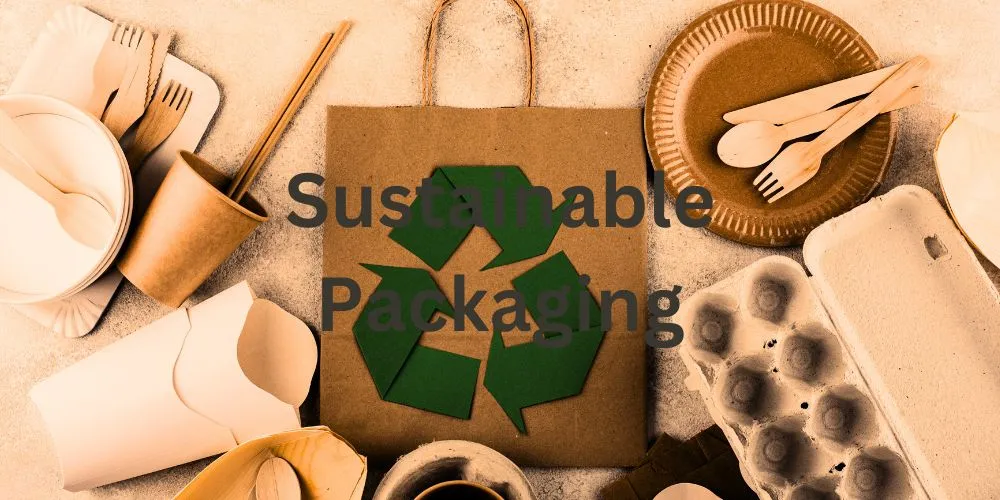Sustainable packaging has emerged as a pivotal solution in pursuing environmentally conscious practices within product packaging. This article delves into the comprehensive world of sustainable packaging, exploring its fundamental principles, diverse methodologies, key advantages, notable applications, and the challenges it addresses within the dynamic landscape of consumer goods and environmental stewardship.
Unveiling Sustainable Packaging
Sustainable packaging involves designing, producing, and using packaging materials with a focus on minimizing environmental impact throughout their lifecycle. Unlike traditional packaging methods that often contribute to pollution and resource depletion, sustainable packaging prioritizes eco-friendly materials, efficient production processes, and minimal waste generation. This approach seeks to strike a balance between meeting the functional requirements of packaging and reducing its ecological footprint.
Key Components of Sustainable Packaging
Understanding the key components of sustainable packaging is essential for comprehending its scope and impact:
- Biodegradable Materials: Sustainable packaging often incorporates biodegradable materials that can naturally break down over time without harming the environment. These materials, derived from renewable sources such as cornstarch or sugarcane, reduce long-lasting waste.
- Recyclable and Recycled Content: Emphasizing recyclability and incorporating recycled content are core components of sustainable packaging. Materials like paper, cardboard, glass, and certain plastics can be recycled, reducing the demand for new raw materials and minimizing the environmental impact of production.
- Reduced Packaging Waste: Sustainable packaging aims to minimize packaging waste by adopting minimalist designs and right-sizing packaging to fit products efficiently. It reduces excess material use and promotes a shift from the disposable culture associated with excessive and non-recyclable packaging.
Methodologies of Sustainable Packaging
Sustainable packaging employs various methodologies to promote responsible consumption and reduce environmental impact:
- Life Cycle Assessment (LCA): Life Cycle Assessment is a methodology used in sustainable packaging to evaluate a product’s or packaging’s environmental impact throughout its entire life cycle. This approach considers raw material extraction, production, distribution, use, and end-of-life considerations.
- Design Thinking for Sustainability: Design thinking for sustainability involves incorporating eco-friendly principles into the packaging design process. It includes selecting materials with lower environmental impact, optimizing packaging for efficient transportation, and designing for recyclability or reuse.
- Closed-Loop Systems: Closed-loop systems in sustainable packaging promote a circular economy by ensuring that packaging materials are collected, recycled, and reintroduced into manufacturing. This approach minimizes the extraction of new resources and decreases the overall environmental effect of packaging.
Advantages of Sustainable Packaging
The adoption of sustainable packaging brings forth a multitude of advantages, reshaping the way products are packaged and consumed:
Environmental Conservation and Reduced Carbon Footprint
One of the primary advantages of sustainable packaging is its contribution to environmental conservation and reducing carbon footprints. By utilizing eco-friendly materials and reducing waste, sustainable packaging minimizes the depletion of natural resources and decreases greenhouse gas emissions associated with traditional packaging.
Consumer Preference and Brand Loyalty
Consumer preference for sustainable practices has become a driving force in the marketplace. Brands that embrace sustainable packaging appeal to environmentally conscious consumers and build brand loyalty by aligning with values that prioritize responsible consumption and environmental stewardship.
Cost Savings and Operational Efficiency
Sustainable packaging can lead to cost savings and operational efficiency for businesses. Optimizing packaging materials, reducing waste, and adopting closed-loop systems can lower production costs, streamline logistics, and enhance overall supply chain efficiency.
Regulatory Compliance and Risk Mitigation
As environmental regulations become more stringent, embracing sustainable packaging helps businesses comply with legal requirements and mitigate regulatory risks. Proactively adopting eco-friendly practices ensures companies are well-positioned to navigate evolving legislative landscapes and avoid potential fines or penalties.
Applications of Sustainable Packaging
Sustainable packaging finds applications across diverse industries, influencing how products are presented to consumers and delivered to the market:
Food and Beverage Industry Leading the Charge
The food and beverage industry has been a trailblazer in adopting sustainable packaging practices. Brands in this sector often prioritize compostable plastics, recycled paper, and eco-friendly coatings to package products while maintaining freshness and integrity.
Beauty and Personal Care Embracing Eco-Friendly Packaging
The beauty and personal care industry is increasingly embracing eco-friendly packaging solutions. From refillable containers to packaging made from recycled materials, brands in this sector are responding to consumer demand for sustainable choices in cosmetics and personal care products.
E-commerce and Sustainable Packaging Innovations
E-commerce has witnessed a surge in sustainable packaging innovations. Companies are exploring eco-friendly alternatives like compostable mailers, recyclable packaging materials, and designs that minimize waste while ensuring the safe delivery of products to consumers.
Pharmaceutical Industry’s Commitment to Green Packaging
The pharmaceutical industry is committing to green packaging practices. Sustainable pharmaceutical packaging includes efforts to reduce the environmental impact of medication packaging, such as incorporating recyclable materials and optimizing packaging design for efficient disposal.
Challenges in Sustainable Packaging
While the advantages are evident, the practice of sustainable packaging faces its challenges. Addressing these challenges is important for realizing the full potential of sustainable packaging efforts:
Cost Barriers and Economic Considerations
Cost barriers pose challenges to the widespread adoption of sustainable packaging. Eco-friendly materials and innovative designs can be more expensive than traditional counterparts, so addressing cost considerations is essential to encourage broader industry adoption.
Infrastructure and Recycling Facilities
The lack of adequate infrastructure and recycling facilities can hinder the efficient processing of sustainable packaging materials. Establishing comprehensive recycling systems and facilities ensures eco-friendly packaging materials can be effectively collected, processed, and reintroduced into the manufacturing cycle.
Consumer Education and Behavior Change
Consumer education and behavior change are critical challenges for sustainable packaging. Many consumers are still unfamiliar with the benefits of eco-friendly packaging or may face barriers in adopting new recycling practices. Educating consumers and fostering behavior change is essential to successfully transitioning to sustainable packaging.
Future Trends in Sustainable Packaging
As technology continues to evolve, future trends in sustainable packaging point toward advancements that further enhance its capabilities:
Smart Packaging Solutions for Environmental Monitoring
Smart packaging solutions incorporating sensors and data analytics are emerging to monitor the environmental impact of packaging throughout its lifecycle. This technology enables real-time tracking of a package’s carbon footprint, encouraging transparency and accountability in sustainable packaging practices.
Bio-Based Materials and Innovations in Material Science
Developing bio-based materials and innovations in material science is a future trend in sustainable packaging. Researchers are exploring alternatives derived from plant-based sources, fungi, and algae, offering biodegradable and compostable options that further reduce the environmental impact of packaging.
Digital Watermarks for Sorting and Recycling
Digital watermarks are being explored to improve sorting and recycling processes. These invisible watermarks can be embedded in packaging materials to convey information about recyclability, materials used, and proper disposal methods, facilitating more efficient recycling.
Collaborations for Industry-Wide Impact
Collaborations between businesses, governments, and non-governmental organizations are becoming more prevalent for industry-wide sustainable packaging impact. Initiatives that involve stakeholders across the supply chain aim to create standardized practices, share best practices, and drive collective measures toward a more sustainable packaging ecosystem.
Conclusion
Sustainable packaging stands at the forefront of a transformative shift in how products are packaged and consumed, prioritizing environmental responsibility without compromising functionality. Its ability to reduce environmental impact, meet consumer demands for eco-friendly options, and drive positive change across industries positions it as a cornerstone in the ongoing journey towards responsible and sustainable consumption. While challenges persist, ongoing advancements and future trends indicate a dynamic and promising future for sustainable packaging, with applications extending into new frontiers of eco-conscious innovation and environmental stewardship.









